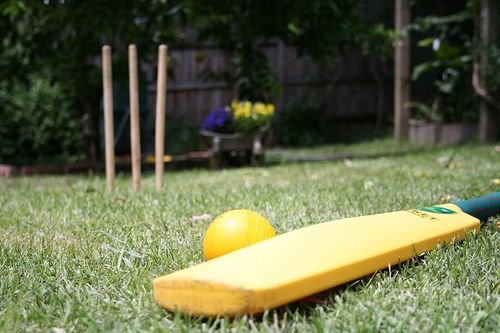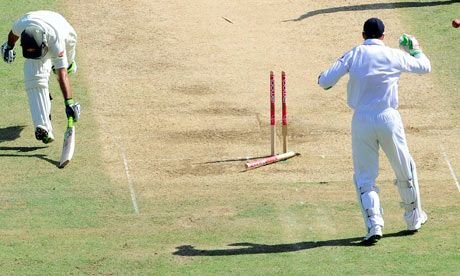Cricket Pitches Explained: The Heart of the Game That Shapes Every Match

In cricket, the pitch is more than just a strip of earth—it’s the very soul of the game. While batters and bowlers often get the spotlight, the pitch is the quiet influencer, shaping every delivery, run, and wicket. Every bounce, turn, and pace depends on the surface beneath the players’ feet.
Whether it’s the grassy swing-friendly surfaces of England, the flat batting tracks of India, or the fiery bounce of Australian turf, a cricket pitch tells its own story—one that influences strategy, player selection, and match results.
Let’s dive into the fascinating world of cricket pitches and understand why this modest-looking 22-yard strip is anything but ordinary.
What Is a Cricket Pitch?
A cricket pitch is a 22-yard-long (20.12 meters) rectangular strip in the center of the field. It is where the main action of a cricket match takes place—where bowlers bowl, batters bat, and results are born.
It is 10 feet wide (3.05 meters) and is flanked by two sets of stumps. Although it’s a small part of the entire field, the condition of the pitch can significantly alter the nature of the game.
Types of Cricket Pitches
Cricket pitches can be broadly classified into three types based on their composition and behavior:
1. Green Pitches
Appearance: Covered with grass.
Effect: Assists seam bowlers. The ball moves after pitching, both in the air and off the surface.
Common in: England, New Zealand.
Best for: Fast bowlers who rely on swing and seam.

2. Dusty or Dry Pitches
Appearance: Dry, cracked, little to no grass.
Effect: Breaks down as the game progresses, providing spin and variable bounce.
Common in: India, Sri Lanka.
Best for: Spin bowlers, especially in the fourth innings of a Test match.
3. Hard Pitches
Appearance: Firm, even with a good bounce.
Effect: Favors bounce and pace but also allows good batting once the ball gets older.
Common in: Australia, South Africa.
Best for: Fast bowlers early on, batters once set.
How Cricket Pitches Are Prepared
The preparation of a cricket pitch is a science mixed with a bit of artistry. Groundsmen, often unsung heroes, spend days—sometimes weeks—crafting the pitch to suit specific conditions.
Key Factors in Pitch Preparation:
Soil Composition
The type of soil (clay content vs sand) affects bounce and pace.
More clay = more bounce.
More sand = less consistent bounce.
Moisture Levels
A moist pitch will help seam and swing.
A dry pitch will break up and assist spin.
Rolling
Heavy rollers flatten the surface and reduce seam movement.
Light rolling allows more natural movement.
Grass Cover
Grass helps the ball move and bounce.
Removing grass makes the pitch slower and better for batting.
Weather Conditions
Sun dries out the pitch and makes it crumbly.
Cloudy, humid weather can keep it damp and lively.
Groundskeepers often walk a tightrope between maintaining fairness and creating a competitive surface.

How Pitch Conditions Affect the Game
1. Batting Strategy
On green tops: Caution and technique matter. Quick wickets often fall.
On flat pitches: Stroke-making becomes easier.
On spinning tracks: Footwork and patience are key.
2. Bowling Tactics
Seamers love live grass and moisture.
Spinners wait for the pitch to dry and crack.
Reverse swing comes into play on abrasive pitches.
3. Team Selection
Subcontinental teams may play three spinners.
English sides often rely on swing bowlers.
Aussies love using tall pacers on bouncy tracks.
Evolution of the Pitch Over a Match
A five-day Test match showcases the pitch’s evolution better than any format:
Day 1: Fresh pitch, some grass, helps pacers.
Day 2–3: Starts to flatten, better for batting.
Day 4–5: Breaks down, cracks appear, aids spin, variable bounce.
In T20s and ODIs, pitches are curated to support run-making, though conditions still subtly impact the game.
Drop-In Pitches: The Modern Marvel
With the rise of multi-purpose stadiums, especially in Australia, “drop-in” pitches have emerged. These pitches are prepared off-site and transported to the stadium like a giant Lego piece.
Pros:
More control over pitch behavior.
Enables stadiums to host concerts, other sports.
Cons:
Sometimes behave inconsistently.
Takes away some of the home advantage.

Famous Pitches Around the World
1. Lord’s (England)
Known for its slope—makes bowling tricky and unique.
2. MCG (Australia)
Massive ground, bouncy pitch, great for contests.
3. Eden Gardens (India)
Iconic venue, usually spin-friendly but has evolved.
4. Wanderers (South Africa)
Known as the Bullring. Fast, bouncy track.
5. Wankhede (India)
Batting paradise with late reverse swing.
Each ground has its own personality, with the pitch being its signature.
Controversies and Pitch Manipulation
Sometimes, pitches are deliberately prepared to favor the home team. This can lead to accusations of bias or unfairness. The ICC (International Cricket Council) rates pitches and can penalize venues for excessively poor or one-sided surfaces.
Examples:
Pitches that turn sharply from Day 1.
Tracks that are unfit due to uneven bounce.
Fair play demands a good balance between bat and ball, and curators are always under scrutiny.
Maintenance and Post-Match Recovery
After a match, pitches need recovery:
Grass is regrown.
Soil is aerated and leveled.
Moisture and nutrients are restored.
Some grounds rotate between multiple pitches on the square to allow recovery time.

Future of Cricket Pitches
With technology and data analytics, pitch science is getting smarter. Tools like moisture sensors, pitch maps, and AI-based predictions are helping curators create better-balanced surfaces.
Also, climate change is making pitch preparation more unpredictable. More rain or heat affects moisture retention and soil behavior.
Why It Matters to Fans and Players
Even casual fans can learn to “read the pitch.” Before every match, experts analyze pitch behavior during the toss. Understanding this gives viewers more context:
Why did the captain choose to bat or bowl?
Why is one team struggling despite being stronger on paper?
For players, pitch knowledge is everything. A great batter knows when to grind or attack. A clever bowler adjusts length, pace, and angle based on what the pitch is offering.
Key Takeaways
The pitch is a silent game-changer in cricket.
Its preparation involves a deep understanding of science and nature.
Different types of pitches suit different playing styles and strategies.
A pitch evolves over time, affecting tactics dynamically.
Technology and sustainability are reshaping how pitches are managed.
FAQs
1. Why is the pitch 22 yards long?
It’s a historical length derived from early English measurements. It has become a global standard.
2. Can the same pitch be used for multiple matches?
Yes, but with careful maintenance. For T20 leagues, pitches are rotated to maintain quality.
3. What is a dead pitch?
A pitch that offers little to no help to bowlers. It doesn’t bounce, turn, or seam much—usually results in high-scoring draws.
4. How do groundsmen control bounce?
Through the level of rolling, clay content, and moisture. Harder surfaces generally bounce more.
5. Are spinning tracks unfair?
Not necessarily. Like green pitches help pacers, spinning tracks favor spinners. The key is balance and consistency.